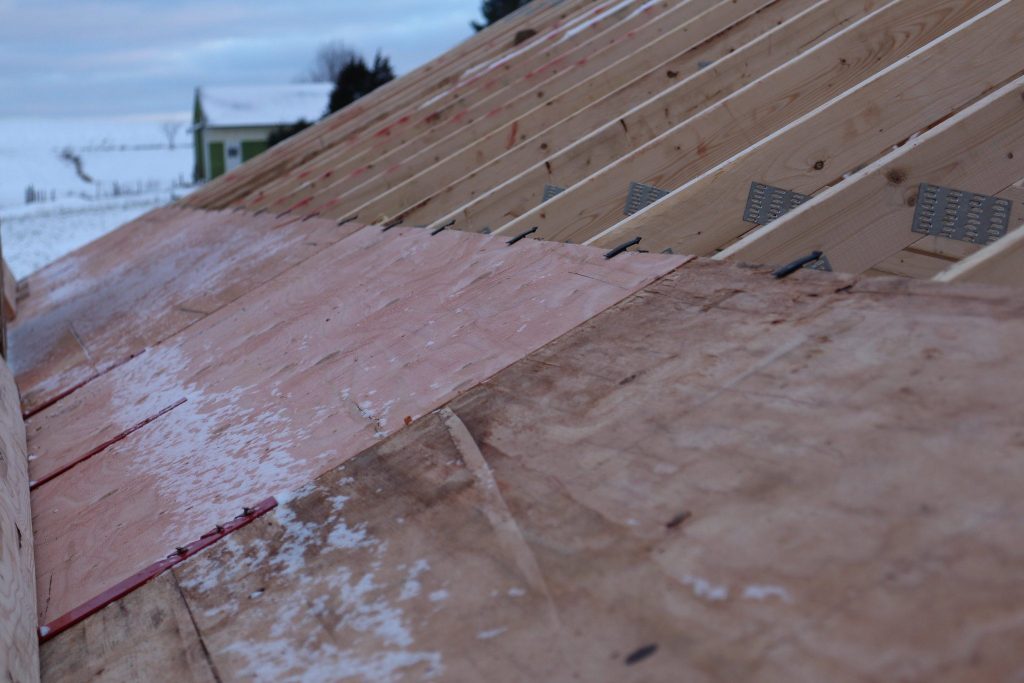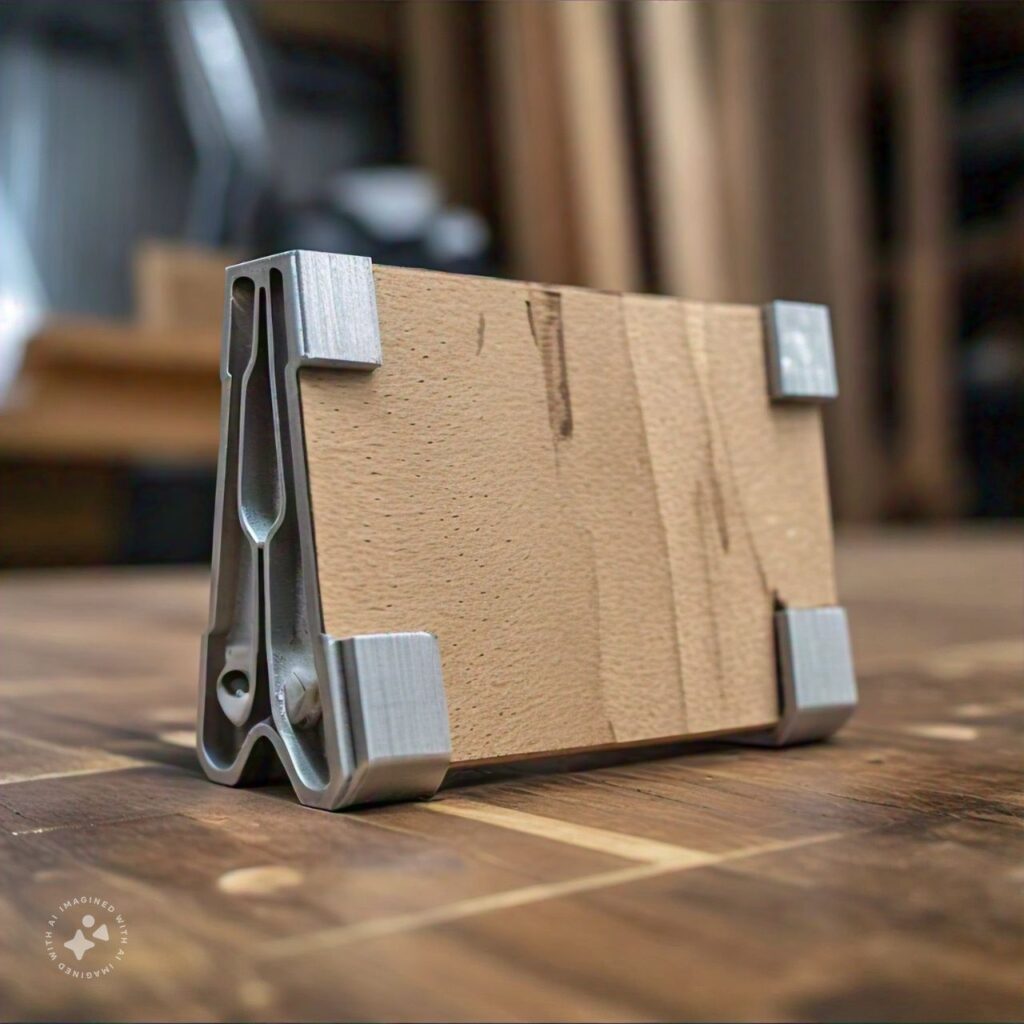Softwood plywood is commonly used for walls, roofs, and floors in home construction. In all these areas, the plywood must bridge gaps between support beams. While it does this well, it can sag over time, causing uneven edges that may lead to structural issues, especially on roofs.
One way to prevent sagging is to add more support beams and reduce the space between them. However, this would significantly increase construction costs. Roof sheathing is more prone to sagging than walls or floors, so extra support is often needed along the edges of plywood sheets. In the past, builders used blocking or tongue-and-groove plywood to solve this issue.
A more affordable solution is the H Clip—a small, easy-to-use metal clip that connects the edges of plywood sheets between support beams. It works similarly to the tongue in tongue-and-groove plywood but without the extra cost of manufacturing those specialty sheets.
The H Clip, also called a panel edge clip, gets its name from its shape, which resembles the letter “H” from the side. One plywood sheet fits into the top section of the clip, and the next sheet fits into the bottom. This simple connection helps keep the edges level, preventing one panel from sagging while the others remain firm.
Using H Clips helps distribute weight evenly across connected plywood panels, reducing the risk of sagging and creating a stiffer, more durable roof. However, they do not prevent warping or buckling—only misalignment if warping occurs.
It’s important to note that H Clips differ from the H Strips used in siding installation. An H Strip is a plastic piece that covers gaps between siding panels to give the panels a finished look and block moisture. Unlike H Clips, H Strips do not add strength or support.
Building codes do not require H Clips, but architects often recommend them to improve roof durability. Builders and homeowners can add them to their projects without needing special approval.

Although H Clips are mainly used for roof sheathing, they come in different sizes to fit plywood ranging from 7/16 inch to ¾ inch thick. When choosing H Clips, ensure they fit snugly—tight enough to stay in place but not so tight that they are challenging to install. Ideally, a light tap with a hammer should secure them.
Installing H Clips is a simple process that happens as the plywood sheathing is put in place. It’s recommended to place them every eight inches along the seam. If the roof trusses are 16 inches apart, use one clip per gap; if they are 24 inches apart, use two clips for extra support.
To install, attach the clips to the existing plywood sheet before adding the next one. The smaller side of the clip usually faces up. Once in place, slide the next sheet into the clips to keep the edges aligned and supported.

H Clips can also be used in areas without structural support, such as angled roof cuts. Since modern home designs often feature complex rooflines with multiple surfaces, these clips help provide extra stability in places where traditional framing isn’t present.
One important thing to note is that H Clips create a small gap between plywood sheets—typically about 1/8 inch. This gap allows the wood to expand with changes in moisture, preventing buckling. However, it won’t affect the roofing materials, as roofing felt quickly covers the space.
You can purchase Plywood H-Clips on Amazon to reinforce and stabilize your roof sheathing. Here are some available options:
Hicarer 100 Pcs Plywood H Clips for Roofing (1/2 Inch)
These steel clips are hot-dipped galvanized for extended life and are designed for quick installation. They fit 1/2-inch plywood panels, ensuring stability and preventing shifting over time.
Sandbaggy 100Pcs Plywood H Clips For Roofing (7/16 Inch)
Made from 20-gauge hot-dipped galvanized steel, these clips are durable and suitable for plywood and oriented strand board (OSB) roofs and walls.
Simpson Strong-Tie PSCL 5/8-20-Gauge Panel Sheathing Clip for 5/8″ Plywood (50ct)
These panel sheathing clips are made from 20-gauge steel and are suitable for 5/8-inch plywood. They enhance the strength and stability of roof sheathing.
Grip H Clip Plywood H Clip 19/32″ – 5/8″ Roof Sheathing (250 Bag)
Designed for 19/32-inch to 5/8-inch roof sheathing, these clips facilitate faster and safer roofing installations.
When selecting H-Clips, ensure they match the thickness of your plywood for a snug fit. Proper installation will enhance the durability and safety of your roofing project.




